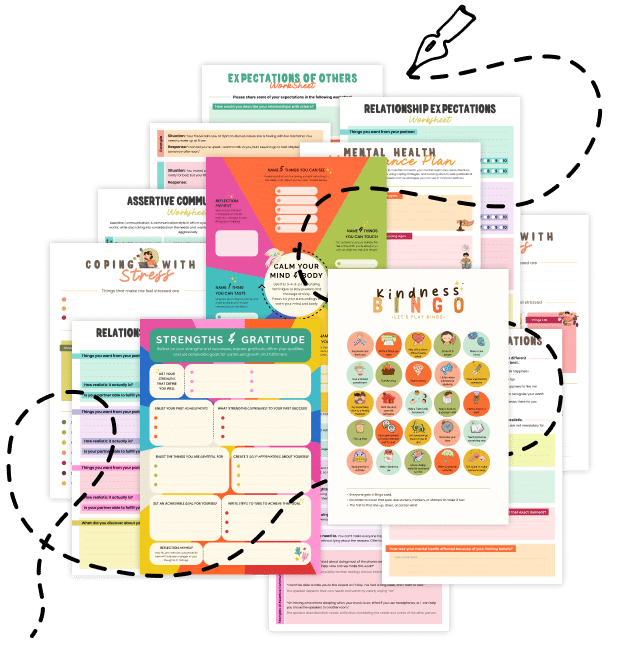20 Things You Should Know About Multisensory Enrichment
Enhance learning, creativity, and overall brain health by stimulating multiple senses at once. Discover what Multisensory Enrichment is, how it works, and how to weave it into your daily life for deeper engagement and mental agility.
1. What Is Multisensory Enrichment?
Multisensory Enrichment involves engaging two or more senses—such as sight, sound, touch, smell, and taste—simultaneously to create a richer, more immersive learning or living experience. It’s about moving beyond a single sense (like just reading text) to tapping into multiple channels for greater cognitive impact.
2. How Multisensory Enrichment Boosts Learning
When multiple senses are stimulated at once, your brain forms stronger associations. This “layered” input makes the information more memorable, as different sensory pathways reinforce each other, resulting in better recall and understanding.
3. Multisensory Enrichment Role in Brain Plasticity
Enriched environments—those brimming with varied sensory stimuli—promote neuroplasticity, or the brain’s ability to reorganize and form new neural connections. The more diverse the stimuli, the more potential for robust, flexible brain circuitry.
4. Sensory Overload vs. Enrichment
It’s possible to have too much stimulation, leading to overwhelm rather than growth. The key to multisensory enrichment is balance—intentionally layering stimuli in ways that support learning or relaxation, not bombard you.
5. Emotional Engagement
Combining multiple senses can spark a stronger emotional response, which boosts motivation and memory. For instance, adding a pleasant scent or music while studying can evoke positive feelings, making the session more engaging.
6. Benefits for All Ages
Multisensory methods help kids grasp complex ideas, support adults in sustaining mental sharpness, and can even aid seniors in maintaining cognitive function. It’s a lifelong tool, adaptable to any age or context.
7. Real-World Applications
- Classroom Learning: Teachers may pair visual aids with hands-on experiments and corresponding sounds.
- Workshops & Trainings: Interactive activities that incorporate tactile props or relevant scents.
- Rehabilitation: Patients recovering from brain injuries often benefit from structured multisensory exercises.
8. Supporting Special Needs
Individuals with learning differences—like dyslexia or autism—can flourish under multisensory instruction. Engaging sight, touch, and sound together provides multiple entry points for grasping new information.
9. Role of Music and Rhythm
Music stimulates multiple regions in the brain. Adding a rhythm or melody can reinforce patterns—like memorizing times tables through a song or coordinating movement therapy with rhythmic cues.
10. Brain Health and Aging
From puzzles that mix imagery and tactile pieces to cooking classes that blend smell, touch, and sight, varied stimuli help older adults maintain cognitive vitality by challenging their brains in fresh ways.
11. Incorporating Nature
Nature is inherently multisensory—rustling leaves, earthy scents, varying textures underfoot. Even brief walks in natural settings provide a rich tapestry of sensory inputs that rejuvenate the mind.
12. Reducing Stress Through Enrichment
Soothing scents, soft lighting, or gentle instrumental music can lower stress hormones. When you pair these elements intentionally, you create a calming environment that helps the brain relax and recharge.
13. Creativity Unlocked
Engaging multiple senses can lead to “cross-pollination” of ideas, sparking original insights. Artists, writers, and innovators often use multisensory prompts—like mood boards with tactile elements—to spur inspiration.
14. Workplace Innovation
Enriching an office environment with artwork, ambient nature sounds, or ergonomic setups that encourage movement can improve focus and morale. A lively, sensory-aware workspace boosts creativity and productivity.
15. Mindful Appreciation
When you intentionally tune in to flavors, textures, sounds, or scents, you practice mindfulness. This heightened awareness not only enriches experiences but also builds emotional resilience and stress management skills.
16. Tech Tools and VR
Virtual reality (VR) and augmented reality (AR) platforms are revolutionizing multisensory learning. These tools simulate sights, sounds, and even haptic feedback to immerse users in highly interactive educational or training scenarios.
17. Careful Curation
Multisensory Enrichment doesn’t mean throwing everything together at once. It’s about thoughtfully blending stimuli—like pairing soft music with ambient lighting and subtle fragrances—to enhance focus or relaxation.
18. Cultural Diversity in Stimuli
Incorporate multicultural elements—like international cuisine, music from various regions, or diverse visual art—to broaden both sensory experiences and cultural awareness.
19. Personalizing Your Approach
Everyone’s sensory preferences and thresholds differ. Some people thrive with fragrant candles and background tunes; others need minimal auditory distractions. Tailor multisensory elements to what resonates best with you.
20. Related Topics to Explore
- Neurobics: Discover brain exercises that pair sensory stimuli with novel tasks for stronger mental agility.
- Tactile Learning Strategies: Dive deeper into hands-on, touch-based techniques for more immersive learning.
- Sensory Gating: Learn how your brain filters out irrelevant stimuli and how to refine that process.
- Cognitive Defusion: Explore methods to detach from intrusive thoughts, which can help you stay fully present during multisensory experiences.
Quick Tips to Boost Multisensory Enrichment
- Layer Stimuli Intentionally: Pair background music or nature sounds with visual or tactile tasks for richer engagement.
- Vary Your Routine: Explore different scents, textures, and environments to keep your brain on its toes.
- Use All Five Senses: When studying or creating, ask yourself: “How can I incorporate sound, sight, touch, taste, or smell?”
- Practice Mindful Observation: Take a moment to note small details—temperature, light quality, subtle flavors—that often go unnoticed.
- Experiment with Balance: Watch for overload. If you feel overwhelmed, reduce one sensory element at a time until you find a comfortable mix.
Multisensory Enrichment capitalizes on your brain’s natural inclination for variety and novelty, building stronger neural pathways and unlocking deeper creativity. Whether you’re teaching, learning, or simply seeking a richer daily experience, thoughtfully blending different senses can transform routine tasks into vibrant, memorable moments. Share this article with anyone eager to enliven their environment, supercharge learning, or explore the full spectrum of human perception!


